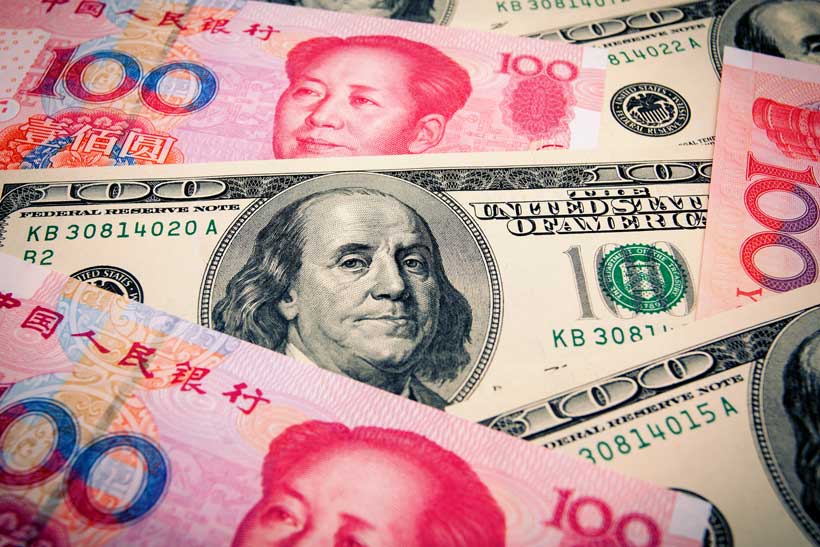Recently, it was reported in the news that Saudi Arabia is in talks to price its oil sales in the Chinese currency Yuan. While some countries support the Yuan as the world’s reserve currency, this effort has already been nipped in the bud due to economic reality.
How the US dollar became the world’s reserve currency
Since the Bretton Woods Conference in 1944, the U.S. dollar has been the world’s reserve currency. Initially, the dollar was the world’s reserve currency based on the amount of gold held by the U.S. Treasury. By the end of World War II, the United States held the world’s largest gold reserves. Other countries accumulated U.S. Treasury bonds instead of U.S. dollars to back their currencies.
As the US involvement in Vietnam dragged on and the US ran massive deficits, countries that held US securities based on US gold reserves became nervous. Countries began to exchange their US securities for gold, which began to deplete the US gold reserves. This reality forced then-President Richard Nixon to take the US dollar off the gold standard and convert it to a fiat currency. Following the US’s example, other countries also switched to a fiat currency, and today every country in the world has a fiat currency.
Even though the United States moved to a fiat currency, the US dollar remained the world’s reserve currency.
A fiat currency depends on the perception of the total wealth and power of a single country. And by any measure of value and strength, the United States stands alone.
The fundamental strengths of the United States
One reason the U.S. has been able to maintain its status as a major power seemingly in perpetuity is its geographic location. With an ocean on both coasts, friendly nations to the north and south, and a climate that provides some of the best farmland in the world, along with navigable rivers that facilitate the transportation of goods and services from the interior, the U.S. is blessed with natural advantages. In addition, the U.S. is energy independent thanks to the development of fracking. This does not include the 4.2 trillion barrels of oil in the Green River Formation that have not yet been tapped.
Another reason for the United States’ staying power is the enduring legacy of the U.S. Constitution, which has so far ensured a stable transfer of political power between various political antagonists, despite the unrest and possible insurrection attempt on January 6, 2021. With its history of stable courts and a friendly business environment, the United States has so far been an oasis of stability in the world.
Combined with the physical and non-physical advantages discussed above, the demographics of the United States provide an internal manufacturing and consumer market advantage that no other country has. While it is true that the annual growth rate of the American population is approaching stagnation levels, one can argue that the previous Trump administration slowed population growth by severely restricting immigration. Coupled with the Covid-19 pandemic, the growth rate of the American population is paltry. Current estimates of population growth range from 376 to 404 million people by 2060. However, this would still make the United States a major manufacturing and consumer market. This is a demographic advantage that no other country has.
The People’s Republic of China
It is a widely held belief that China is the emerging Superpower, and that the United The United States is a declining nation. That may be a popular saying, but when one soberly examines the facts about China, the economic challenges it faces, the lack of natural resources, and China’s aging population, a sobering picture emerges for the future of the People’s Republic of China.
While many people rave about China’s economic growth and companies prostitute themselves to tap into the Chinese domestic market, few pay attention to the enormous debt that poses a looming catastrophe for the Chinese economy and the danger that such a collapse could bring. It is estimated that China’s debt is $28 trillion. China’s debt-to-GDP ratio is 282 percent. It is believed that the debt share could be even higher due to shadow lending.
Geopolitician Peter Zeihan compares and contrasts the notions of money in the US and China. In the US, money is seen as an economic good. In China, money is seen as a political good. In the US, money has value in itself. In China, money is a political good and only has value if it can be used to achieve a political goal. The concepts of return or profit margin do not exist in China, and therein lies the danger: Eventually, the law of supply and demand will prevail and the Chinese economy will have to undergo a correction. The longer it takes to deal with this economic correction, the more damage the inevitable correction will do to the Chinese economy.
While the United States has an open economy and money can be transferred in and out of the United States at will, the Chinese government imposes capital controls on the transfer of money out of China.
By restricting the flow of capital to and from China, investors risk losing all their assets if a political crisis occurs that leads to an economic crisis or culminates in an armed conflict.
Looking at the bare facts, the advantages of the US dollar over the yuan are enormous. Any rational economic actor would rather invest his money in the US than in China.

